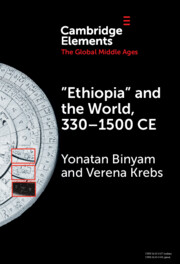Element contents
‘Ethiopia’ and the World, 330–1500 CE
Published online by Cambridge University Press: 11 May 2024
Summary
- Type
- Element
- Information
- Online ISBN: 9781009106115Publisher: Cambridge University PressPrint publication: 30 May 2024
References
- 5
- Cited by

